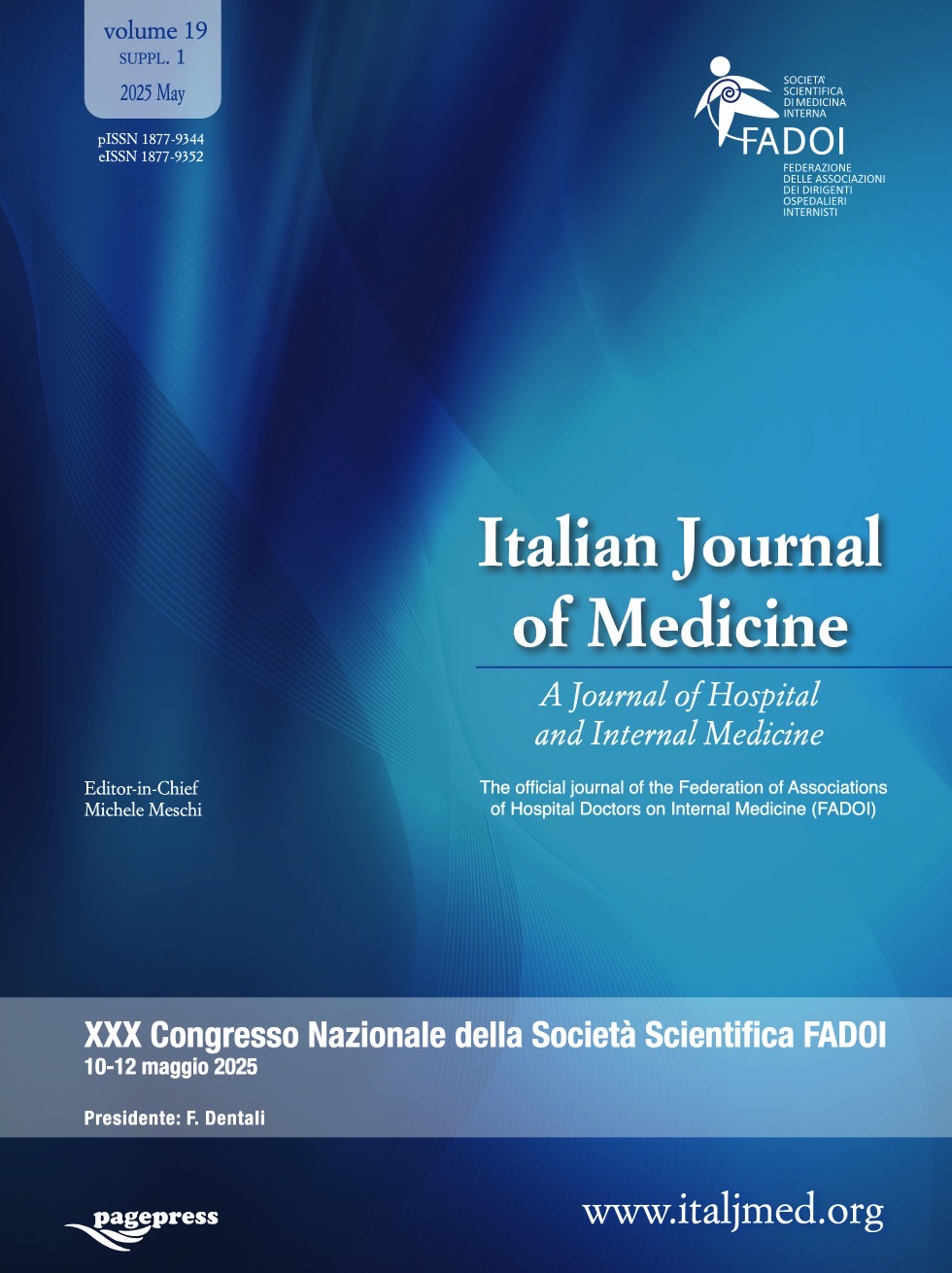XXX FADOI Italian Congress | 10-12 May 2025
26 August 2025
Vol. 19 No. 1(s1) (2025): XXX FADOI Italian Congress | 10-12 May 2025
P34 | Erythrodermia in Internal Medicine: clinical features and outcomes in a monocentric series
R. Capecchi1, S. Barsotti1, G. Bini1, F. Masi2, F. Finizola3, C. Cois2, E. Citi1, G. Linsalata1, C. Giani1, J. Rosada1 | 1Azienda USL Toscana Nordovest, Pisa, (Livorno), 2University of Pisa, 3Azienda USL Toscana Nordovest, Pisa, (Fivizzano), Italy
Publisher's note
All claims expressed in this article are solely those of the authors and do not necessarily represent those of their affiliated organizations, or those of the publisher, the editors and the reviewers. Any product that may be evaluated in this article or claim that may be made by its manufacturer is not guaranteed or endorsed by the publisher.
All claims expressed in this article are solely those of the authors and do not necessarily represent those of their affiliated organizations, or those of the publisher, the editors and the reviewers. Any product that may be evaluated in this article or claim that may be made by its manufacturer is not guaranteed or endorsed by the publisher.
35
Views
0
Downloads







